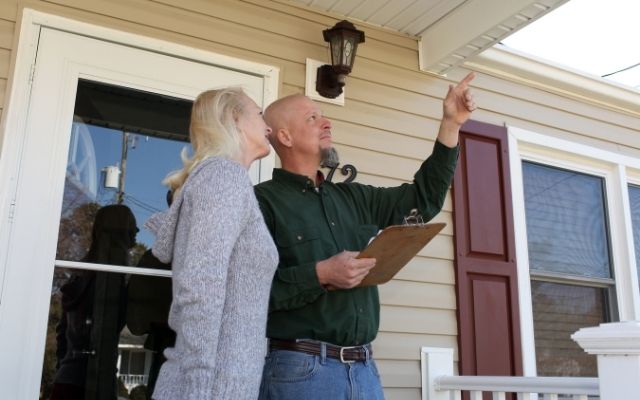Security Deposit Laws in California
The state of California has laws in place to help protect the rights of both landlords and tenants. One such law is the security deposit law. Contained in the statewide landlord-tenant law, the security deposit law lists rules that both parties to the lease or rental agreement must adhere to.
As a California landlord, understanding this important law can help you avoid any disputes with your tenant.
The following is a basic overview of California Security Deposit Laws:
How Much Security Deposit Can Landlords Charge in California?
As a landlord, the California security deposit law limits the amount you can charge your tenant. How much you can charge them depends on whether the rental unit you’re renting out is furnished or not.
If it is a furnished residential property, the maximum security deposit you can ask for shouldn’t exceed 3X a month’s rent amount. By charging, say, $2,000, the most you can ask for a deposit shouldn’t exceed $6,000.
If it is an unfurnished residential property, then the maximum you can ask shouldn’t exceed 2X a month’s rent. So, for example, if the rent is $2,000, then the most you can ask for a deposit shouldn’t exceed $4,000.
Are Non-Refundable Deposits Legal in California?
Can a landlord in California charge a non-refundable deposit under the California security deposit laws? No.
Unlike some other states, the state of California views security deposits as the tenants’ property. Nonetheless, you still have a right to make appropriate deductions to their deposit in certain cases.
Storage of the Tenant’s Security Deposit
Under California law, it’s your responsibility to store tenants’ security deposits once they sign a rental agreement.
In a state like New Hampshire, for instance, a landlord is required to store a tenant’s deposit in an interest-earning account. Also, in Iowa, landlords are required to store a tenant’s deposit in a separate bank account.

Under California law, however, you aren’t required to do either of those things. The law doesn’t state a specific requirement in regard to storing tenants’ security deposits.
Security Deposit Receipt
As a California landlord, you don’t have to provide your tenant with a written receipt upon receiving their security deposits. Most California landlords still provide their tenants with written notice of the deposit amount received.
What Can A Landlord Deduct from a Security Deposit in California?
As a landlord, you may be able to keep a tenant’s deposit for a couple of reasons, in accordance with California Civil Code 1950.5. They include:
- When a tenant defaults on rent payment. Failure to pay rent is a serious rental agreement violation. If a tenant ceases to pay rent, you can use part or all of the deposit to cover it.
- When the tenant causes negligent damage to the property that goes beyond ordinary wear and tear. Negligent or careless damage is defined as that damage exceeding normal wear and tear. The following are some examples of damage vs. wear and tear:
Damage |
Normal Wear & Tear |
| Unauthorized paint colors | Faded paint due to sun exposure |
| Damage to the walls due to hanging pictures | Cracks in the walls due to settling |
| Chipped countertops | Light watermarks and scratches |
| Broken window hardware | Loose window handle |
| Chipped, missing or broken tiles | Dirty grout surrounding the tiles |
- If the rental unit requires excessive cleaning. A tenant is required to evict the premises looking the same way they found it, with a little more normal wear and tear.
- If the tenant fails to settle their bills when moving out of the property.
In any case, you must provide an itemized statement when making deductions.
Walk-Through Inspection
Under California law, tenants have a right to a walk-through inspection. The purpose of the inspection is to help the landlord document the condition of the rental unit. If there are issues, a tenant will have some time to fix them before the property owner takes money from their deposit.

As a landlord, below are steps you must follow.
- You must first let your tenant know of the inspection beforehand.
- The tenant isn’t obligated to agree to the inspection.
- If the tenant agrees, you should carry out the inspection 2 weeks before the tenancy ends.
- You must serve the tenant with 48 hours’ notice before the inspection day. The notice must state the time and date of the inspection.
- You must present the tenant with a list of all the repairs that must be done before the final inspection.
Security Deposit as Last Month’s Rent
The only time a tenant can use the security deposit to pay last month’s rent or unpaid rent is if there is a written agreement in place specifically allowing it.
California Rental Deposit Return Law
California security deposit refund law says that landlords have 21 days to return a tenant’s deposit. The notice must include an itemized statement that indicates:
- The security deposit amount received
- A list of itemized deductions, if any.
- The deposit amount is returned to the tenant.
In the case of deductions, you must provide documents and receipts showing the charges you incurred. For example, on the labor, materials and cost of hiring the professional. You must, however, return personal property if it’s left behind by the previous tenant, or attempt to.
And if the work is yet to be completed, you must make a “good faith” deduction when estimating the costs.
Failure to Return a Tenant’s Security Deposit
As a landlord, the failure to return the tenant’s deposit can have several repercussions, such as security deposit disputes. For one, your tenant can sue you – usually in a small claims court. And two, if found guilty by the small claims court, you may be liable for paying up to 2 times the deposit in damages or pay interest, even if the tenant stopped paying rent.
If a landlord fails to do this, it can cause more issues. Make sure to fill out the proper legal forms after small claims court.
Sale of the Rental Property
When a landlord intends to sell the property, they have to prepare. If the property falls into a new pair of hands, you’ll have two options when dealing with security deposits in California.

One of the options is to transfer the deposit to the new owner, with fewer deductions. The former landlord must then do the following:
- Let the tenant know of the new owner’s name, address and phone number. The notice must be in writing.
- Provide written notice to both the incoming tenant and the tenant regarding the deposit amount and any deductions made.
The other option is to return the tenant’s security deposit once the lease agreement ends, minus deductions. Still, you must let the new owner know (in writing) of:
- The security deposit amount.
- Appropriate deductions made, if any.
- Your decision to return the deposit back to the tenant.
Still require more help? If so, Halcyon Real Estate Services can help. Our focus is to help investors maximize their return while providing residencies that tenants are proud to call home!





